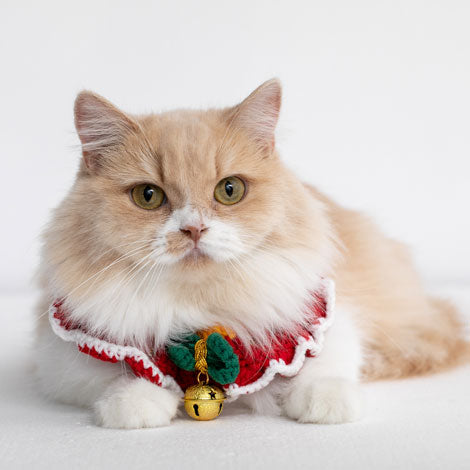Exercise Your Cat to Lose Weight
What is obesity?
A cat that weighs 20% or more above its ideal body weight is considered obese. Obesity can have a number of negative effects on the body. Fat cells release chemicals that are pro-inflammatory in nature, causing stress and inflammation in the body. A number of hormonal imbalances can occur, including diabetes. Finally, obesity makes it more difficult for cats to walk, exacerbates weight gain, and leads to osteoarthritis and a decreased quality of life.
How can obesity be treated?
Obesity occurs when a cat is consuming more calories than it expends. Therefore, there are two methods to address obesity.
1. Reduce caloric intake. This can be achieved through the use of restricted-calorie foods, combined with measuring meals to ensure that your cat is not being overfed. Your veterinarian will help you determine the best food for your cat's situation.
2. Increased calorie expenditure. This requires increasing your cat’s exercise level, in order to help her burn more calories than she is taking in.
In reality, effective weight loss in cats typically relies on a combination of these two changes.
How can I encourage my cat to exercise?
Cats are individuals, and their preferences may vary, so you will likely need to try multiple methods of encouraging exercise to find something that appeals to your cat.
Here are some suggestions:
Use toys to recreate hunting behaviors. Cats are naturally predatory animals. Although it may be hard to imagine your fuzzy couch potato hunting small prey, most cats do retain some hunting instinct. You can use this to your advantage, by finding toys that encourage hunting behaviors in your cat.
- Use a laser pointer to simulate a small bug running across the floor and see if your cat will chase it.
- Slide small mouse-shaped toys across your floor and encourage your cat to catch them, or purchased motorized mice that are designed to move in a realistic manner.
- Many cats like wand-style toys, which allow you to pull a feather toy through the air or across the ground to simulate a prey animal.
Allowing your cat to chase and play with these toys is an excellent way to get her moving and burning calories.
Create an agility course for your cat. Although many of us think of agility training as a dog’s sport, cats can actually become very good at agility work. Use various household items to create a small obstacle course in your home, then use a highly desirable toy or treat to lure your cat over, under, and through various obstacles in order to promote activity. While not all cats will enjoy this activity, those that do can burn a significant number of calories.
Purchase a cat tree to promote climbing. Most cats love cat trees and will eagerly climb to the highest resting spot in order to have a good vantage point in their home. As your cat climbs, she will be getting exercise and burning calories.


If your cat is hesitant, place several small treats on each level of the cat tree. This will encourage her to climb and explore and may lead her to start using the cat tree on her own.
Use a leash to allow your cat to explore outdoors. Most cats on a leash will spend more time smelling, listening, and watching than truly walking, so cats get less benefit from walks then a dog or a human would. Still, taking a cat outdoors on a leash does encourage some physical activity and will provide a small calorie-burning benefit.
Make mealtime a more active event. Instead of placing your cat’s food bowl on the floor, place it on an elevated surface (such as your washer or dryer). This ensures that your cat has to jump up each time that it wishes to eat, encouraging physical activity.
For even more physical activity, try eliminating the food bowl entirely. Measure out your cat’s meal and then divide it up into 5-10 smaller portions. Place each of these portions in a different location around the house (directly on the ground or a shelf, or in a small bowl). This requires your cat to 'hunt' for her food throughout the day, mimicking her instinctive hunting behavior and encouraging her to move around the house.
Puzzle feeders can also be an excellent way to introduce activity to mealtime. Puzzle feeders require physical activity by the cat in order for the feeder to dispense food. For example, your cat may have to roll a ball around to dispense individual pieces of food or move pieces of food through a maze with her paws.
While some cats may not be receptive to all of the above suggestions, trying each idea may help you find several ways that you can promote activity in your cats. Any increased exercise will lead to increased calorie expenditure, promoting weight loss in your cat.









